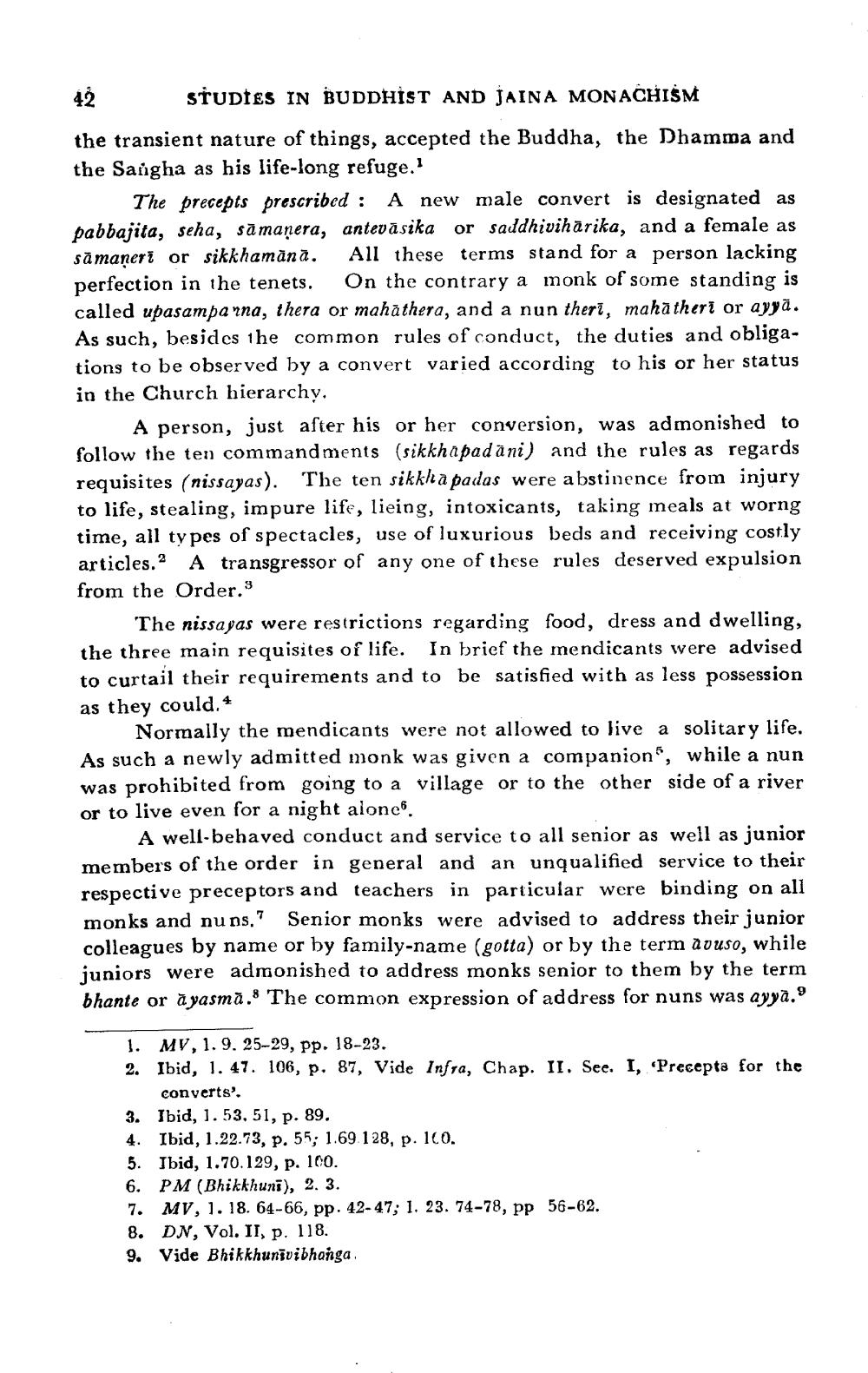________________
42 STUDIES IN BUDDHIST AND JAINA MONACHISM the transient nature of things, accepted the Buddha, the Dhamma and the Sangha as his life-long refuge."
The precepts prescribed : A new male convert is designated as pabbajita, seha, sa manera, antevāsika or saddhiviharika, and a female as samaneri or sikkhamănă. All these terms stand for a person lacking perfection in the tenets. On the contrary a monk of some standing is called upasamparna, thera or mahathera, and a nun theri, maha theri or ayya. As such, besides the common rules of conduct, the duties and obligations to be observed by a convert varied according to his or her status in the Church hierarchy,
A person, just after his or her conversion, was admonished to follow the ten commandments (sikkhapadani) and the rules as regards requisites (nissayas). The ten sikkha padas were abstinence from injury to life, stealing, impure life, lieing, intoxicants, taking meals at worng time, all types of spectacles, use of luxurious beds and receiving costly articles.2 A transgressor of any one of these rules deserved expulsion from the Order.3
The nissayas were restrictions regarding food, dress and dwelling, the three main requisites of life. In brief the mendicants were advised to curtail their requirements and to be satisfied with as less possession as they could.4
Normally the mendicants were not allowed to live a solitary life. As such a newly admitted monk was given a companion, wh was prohibited from going to a village or to the other side of a river or to live even for a night alone
A well-behaved conduct and service to all senior as well as junior members of the order in general and an unqualified service to their respective preceptors and teachers in particular were binding on all monks and nuns, Senior monks were advised to address their junior colleagues by name or by family-name (gotta) or by the term avuso, while juniors were admonished to address monks senior to them by the term bhante or à yasmā.8 The common expression of address for nuns was ayya.9
1. MV, 1. 9. 25-29, pp. 18-23. 2. Ibid, 1. 47. 106, p. 87, Vide Infra, Chap. II. See. I, Precepta for the
converts'. 3. Ibid, 1.53, 51, p. 89. 4. Ibid, 1.22.73, p. 55; 1.69 128, p. 160. 5. Jbid, 1.70.129, p. 100. 6. PM (Bhikkhuni), 2. 3. 7. MV, 1. 18. 64-66, pp. 42-47; 1. 23. 74-78, pp 56-62. 8. DN, Vol. II, p. 118. 9. Vide Bhikkhunivibhanga,




